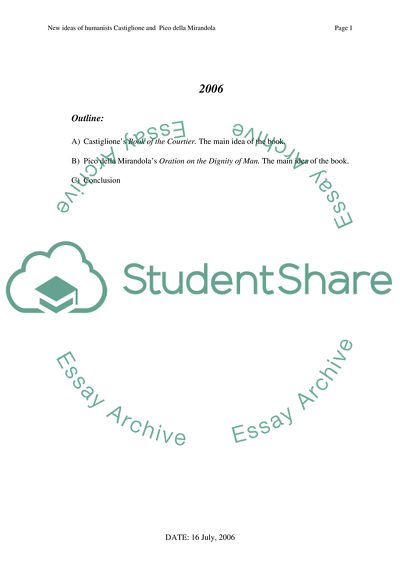Cite this document
(New Ideas of Humanists: Castiglione and Pico Della Mirandola Term Paper, n.d.)
New Ideas of Humanists: Castiglione and Pico Della Mirandola Term Paper. https://studentshare.org/literature/1704538-how-these-writings-castigliones-the-courtier-and-della-mirandalas-oration-on-the-dignity-of-man-revel-the-new-ideas-of-the-humanist-movment
New Ideas of Humanists: Castiglione and Pico Della Mirandola Term Paper. https://studentshare.org/literature/1704538-how-these-writings-castigliones-the-courtier-and-della-mirandalas-oration-on-the-dignity-of-man-revel-the-new-ideas-of-the-humanist-movment
(New Ideas of Humanists: Castiglione and Pico Della Mirandola Term Paper)
New Ideas of Humanists: Castiglione and Pico Della Mirandola Term Paper. https://studentshare.org/literature/1704538-how-these-writings-castigliones-the-courtier-and-della-mirandalas-oration-on-the-dignity-of-man-revel-the-new-ideas-of-the-humanist-movment.
New Ideas of Humanists: Castiglione and Pico Della Mirandola Term Paper. https://studentshare.org/literature/1704538-how-these-writings-castigliones-the-courtier-and-della-mirandalas-oration-on-the-dignity-of-man-revel-the-new-ideas-of-the-humanist-movment.
“New Ideas of Humanists: Castiglione and Pico Della Mirandola Term Paper”. https://studentshare.org/literature/1704538-how-these-writings-castigliones-the-courtier-and-della-mirandalas-oration-on-the-dignity-of-man-revel-the-new-ideas-of-the-humanist-movment.


